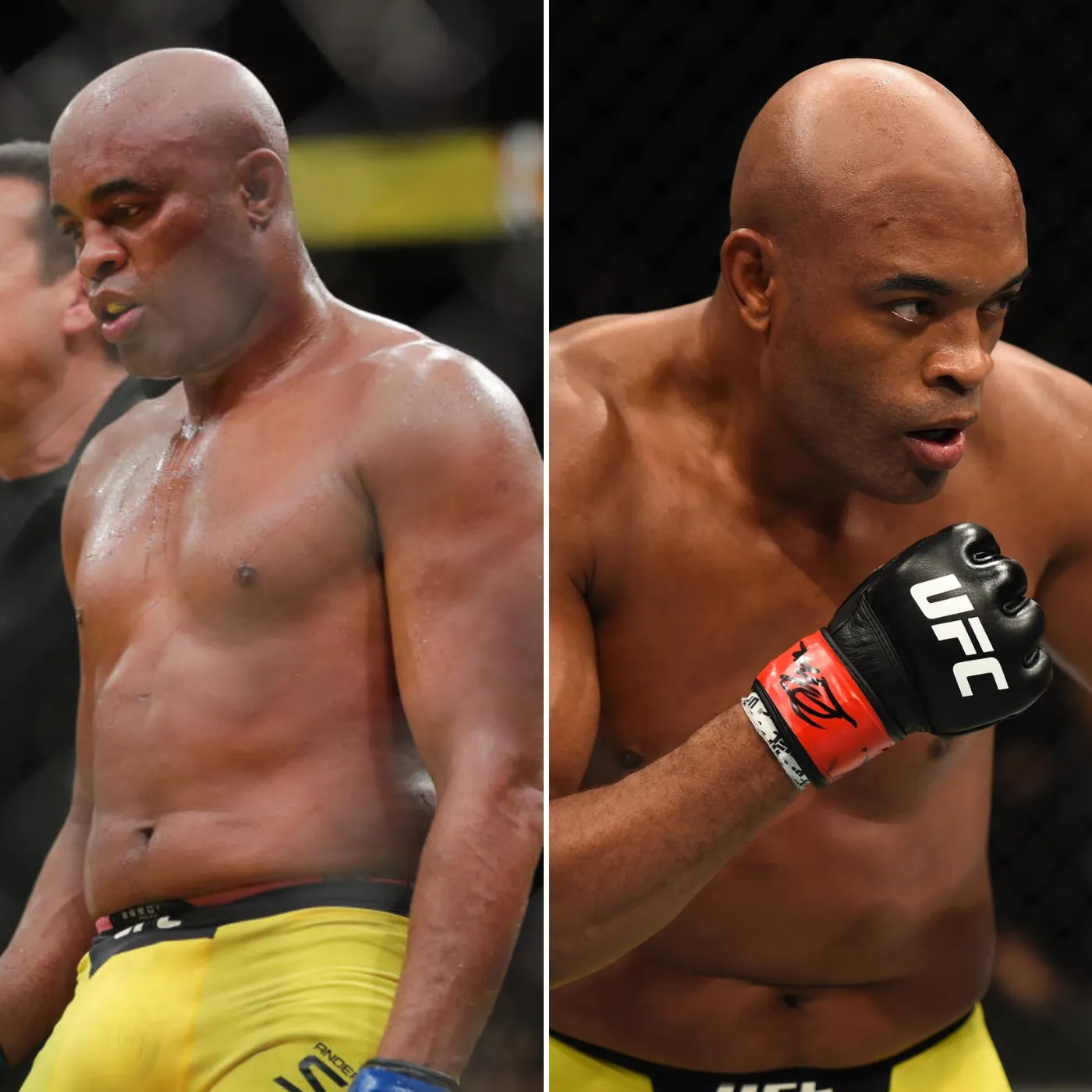Anderson Silva’s Darkest Days and What Happened After
Before his darkest days, Anderson Silva was at the height of his career, recognized as one of the greatest mixed martial artists (MMA) in the world. Silva’s meteoric rise in the UFC began in 2006, when he made his debut and immediately showcased his unmatched skills. His smooth, elusive movements, fluid striking, and ability to […]

Before his darkest days, Anderson Silva was at the height of his career, recognized as one of the greatest mixed martial artists (MMA) in the world. Silva’s meteoric rise in the UFC began in 2006, when he made his debut and immediately showcased his unmatched skills. His smooth, elusive movements, fluid striking, and ability to outthink his opponents quickly earned him the moniker “The Spider.” Silva was more than just a fighter; he was an artist in the octagon, controlling the pace of fights with ease.

At the height of his career, Silva became the UFC Middleweight Champion, a title he held for a staggering 2,457 days—almost seven years—and remains the longest title reign in UFC history. His record of 16 consecutive victories was unparalleled. With 10 successful title defenses, Silva cemented his legacy as a true champion. His dominance in the octagon, combined with his stunning ability to finish fights with spectacular knockouts or submissions, made him one of the most feared and admired athletes in MMA.

The Fall: The Injury That Changed Everything
Silva’s career, however, took an unexpected and dramatic turn in December 2013. During his highly anticipated rematch with Chris Weidman at UFC 168, Silva suffered a catastrophic injury that changed the course of his career forever. In the second round, while attempting one of his signature leg kicks, Weidman checked it with his knee, resulting in a horrific leg fracture. Silva’s fibula snapped in half, leaving him writhing in pain on the mat.

This injury required extensive surgery and a prolonged rehabilitation period. It was one of the most grotesque injuries ever seen in UFC history, and it became the defining moment of Silva’s darkest days. The Spider, once invincible in the octagon, was now forced to confront his own mortality. Not only did the injury leave him physically broken, but it also tested his mental resilience. Silva had always prided himself on his unbeaten record, and this injury shattered his perception of invulnerability.
The Comeback and Struggles with Self-Doubt
After months of recovery, Silva returned to the UFC in 2015, eager to prove that he was still a top contender. His first fight back was against Nick Diaz, a highly anticipated showdown. Despite winning by unanimous decision, the performance left much to be desired. Silva was slower, less agile, and less precise than before. Fans and analysts began to wonder if Silva would ever regain the form that had made him a champion.
Compounding his struggles was a suspension in 2015 for testing positive for banned substances after his fight with Diaz. The suspension lasted a year, further tarnishing Silva’s reputation and fueling doubts about his legacy. This combination of physical limitations and mental struggles led to a loss of confidence. Silva, the man who had once been untouchable, now had to confront the harsh reality that his body was not what it used to be.
The doubt surrounding his ability to return to his former glory grew, and Silva was forced to wrestle with questions about his future. His desire to continue fighting was in conflict with the understanding that his best years may have already passed. Self-doubt became a constant companion as Silva struggled to reconcile his desire to fight with the reality of his physical limitations.
The Personal Struggles and Challenges Outside the Cage
As his career began to unravel, Silva’s personal life also became a source of difficulty. The pressure of maintaining his public image as a champion, coupled with his internal struggles, took a toll on his relationships and mental health. In interviews, Silva admitted that it was tough to accept the changes in his career and body. He began to feel more isolated, unable to fully connect with the fighter he once was.
The scrutiny of the media and the expectations from fans added to the pressure. Silva felt trapped in a cycle where he could no longer live up to the image of perfection that had been projected onto him for so many years. Outside of the cage, the pressures mounted. His family life and relationships faced strain as Silva wrestled with his identity and role in the world, both as a fighter and as a man.
Finding Redemption and a New Purpose
Despite these overwhelming obstacles, Anderson Silva slowly began to find a new sense of purpose. After a string of disappointing performances and a significant loss to Uriah Hall in 2020, Silva announced his retirement from MMA. This decision marked the end of an era, as Silva officially stepped away from the sport that had brought him fame and fortune.
Retirement, however, was not the end of Silva’s story. Rather than disappearing into the shadows, he embraced the opportunity to reflect and rebuild. He began to focus on his mental health and the well-being of his family. Silva also became an advocate for the younger generation of fighters, offering advice and sharing the lessons he had learned over the years. Through his experiences, Silva realized that the fight was not just about the battles in the octagon but about finding peace within and learning to accept one’s own limitations.
In interviews following his retirement, Silva often spoke about the importance of mental strength, both inside and outside of the cage. He began to advocate for mental health awareness within the combat sports community, sharing his own struggles with anxiety and self-doubt. This shift in focus allowed Silva to find redemption, not as a fighter but as a mentor and role model for those who faced similar challenges.
Legacy Beyond the Cage: Silva’s Impact on MMA
Anderson Silva’s legacy extends far beyond the confines of the Octtagon. His influence on the sport of MMA is undeniable. Silva was a pioneer in the art of striking, blending traditional martial arts with innovative techniques that elevated the sport to new heights. His ability to control his opponents with minimal effort made him a unique force in the UFC.
But it is Silva’s resilience and growth outside the cage that will define his legacy moving forward. As a mentor, Silva now dedicates much of his time to helping younger fighters navigate the mental and emotional challenges of their careers. His story is one of redemption, proving that even the greatest athletes face adversity, and it’s how they respond to that adversity that defines their true character.
A Fighter’s True Strength
Anderson Silva’s darkest days were defined by pain, doubt, and loss, but his ability to overcome these challenges has become an inspiration to many. His journey shows that the true measure of strength lies not only in physical prowess but also in the ability to rise from setbacks and embrace life’s challenges with grace. Silva may have stepped away from the UFC, but his legacy continues to inspire, reminding us that the hardest battles are often the ones fought within.
As Silva moves forward in his life, focusing on his family, philanthropy, and guiding the next generation of fighters, his story serves as a powerful reminder of the strength it takes to rebuild after life’s toughest trials.













































